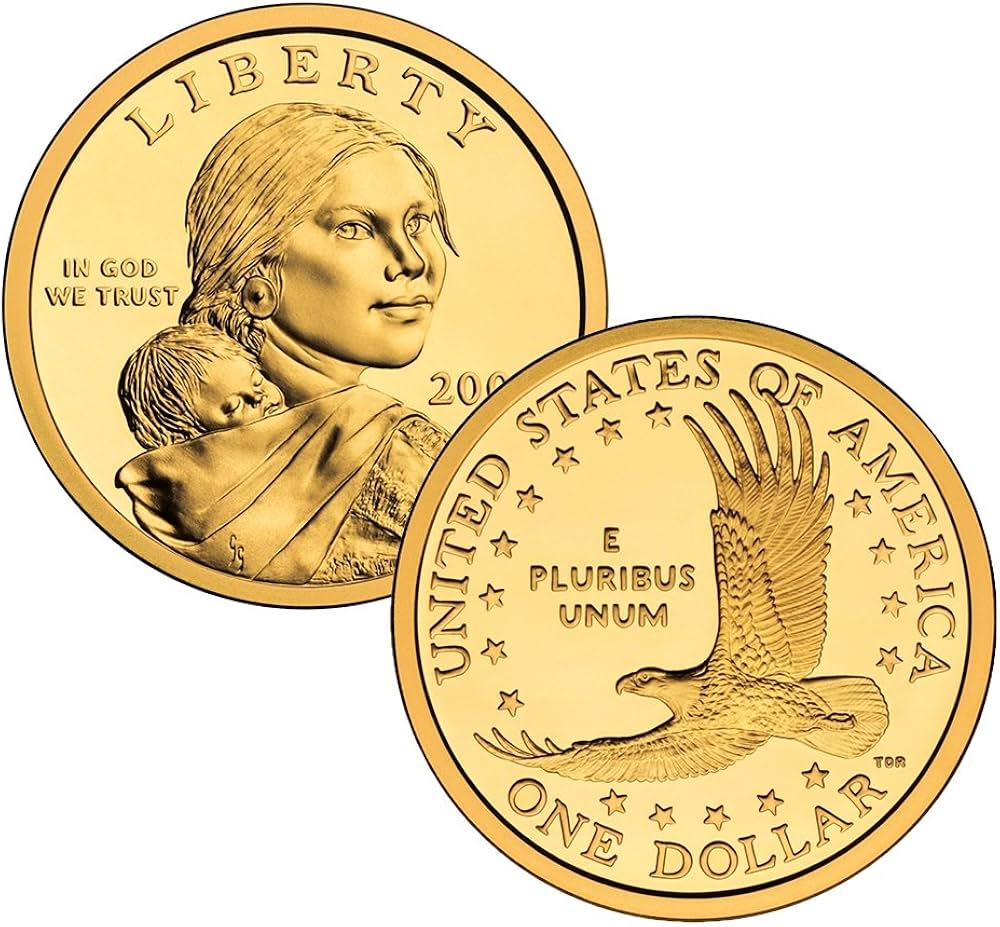The Sacagawea coin, also known as the “Golden Dollar,” has intrigued many collectors and the general public since its introduction in 2000. With its distinctive golden color and the image of Sacagawea, the Shoshone woman who assisted the Lewis and Clark expedition, the coin stands out in the realm of U.S. currency. However, a common question arises: Is the Sacagawea coin made of real gold? This article will explore the composition, history, and value of the Sacagawea coin to answer this question in detail.
The Composition of the Sacagawea Coin
The Sacagawea coin is not made of real gold, despite its golden appearance. The coin is composed of a core of pure copper with an outer layer of manganese brass, which gives it its distinctive golden color. Specifically, the coin’s composition is 88.5% copper, 6% zinc, 3.5% manganese, and 2% nickel. The use of these metals was chosen for several reasons, including durability, cost-effectiveness, and the ability to create a coin that is easy to distinguish from other U.S. coins.
Why Is It Called the “Golden Dollar”?
The Sacagawea coin is often referred to as the “Golden Dollar” due to its color, but this term can be misleading for those unfamiliar with its actual composition. The golden hue is purely aesthetic and was designed to give the coin a unique and attractive appearance. The coin was introduced as a replacement for the Susan B. Anthony dollar, which had a similar size and composition to the quarter, leading to confusion among users. The Sacagawea coin’s distinct color and smooth edge were intended to make it easily distinguishable from other coins in circulation.
The History and Significance of the Sacagawea Coin
The Sacagawea coin was first issued in 2000 by the United States Mint as part of an effort to promote dollar coin usage in everyday transactions. The coin was designed by sculptor Glenna Goodacre, who was selected through a national competition. The obverse side of the coin features an image of Sacagawea carrying her infant son, Jean Baptiste Charbonneau, symbolizing her role as a guide and interpreter for the Lewis and Clark expedition.
The reverse side of the coin initially featured an image of a soaring eagle, designed by Thomas D. Rogers. However, since 2009, the reverse design has been changed annually as part of the Native American $1 Coin Program, which honors the contributions of Native Americans to the history and development of the United States.
Value of the Sacagawea Coin
In terms of monetary value, the Sacagawea coin holds a face value of one U.S. dollar. However, the value of Sacagawea coins can vary depending on factors such as condition, rarity, and any unique attributes. For example, some Sacagawea coins produced in limited quantities or with special finishes, such as proof or uncirculated versions, may be worth more to collectors.
For most Sacagawea coins in circulation, the value remains at face value, unless the coin is in particularly good condition or has some other collectible significance. It’s important to note that while the coin may be appealing to collectors, its value as a collectible does not derive from the gold content but rather from its historical and cultural significance.
The Role of the Sacagawea Coin in U.S. Currency
The introduction of the Sacagawea coin was part of an effort to encourage the use of dollar coins in everyday transactions, as they are more durable and cost-effective over time compared to paper currency. However, despite these efforts, the coin has not seen widespread use in circulation. The U.S. public has generally preferred dollar bills over dollar coins, which has limited the coin’s role in everyday transactions.
The Sacagawea coin continues to be minted and issued by the U.S. Mint, particularly for collectors. Since 2009, the coin has also played a role in educating the public about Native American history and contributions, with each year’s design highlighting different aspects of this heritage.
Common Misconceptions About the Sacagawea Coin
Due to its golden color and the fact that some coins are made from precious metals, there is a common misconception that the Sacagawea coin contains real gold. This is not the case. The coin’s value is not tied to any precious metal content but rather to its face value and potential collectible interest. Understanding the actual composition of the Sacagawea coin is crucial for anyone considering its value, whether for use in transactions or as part of a collection.
See also: The Value of Sacagawea Gold Dollars: More Than Just a Dollar
Collecting Sacagawea Coins
For collectors, Sacagawea coins can be a fascinating addition to a collection, especially given the variety of designs introduced through the Native American $1 Coin Program. Collectors may seek out proof versions, uncirculated coins, or coins from specific years or mint marks. While these coins may not have significant intrinsic value in terms of metal content, they can be valuable as part of a historical or thematic collection.
Conclusion
The Sacagawea coin, with its distinctive golden color, plays a unique role in U.S. currency and coin collecting. While it is not made of real gold, the coin’s design, historical significance, and the annual changes in its reverse design make it an intriguing piece for collectors and those interested in U.S. history. Understanding that the coin’s value is based on its face value and collectible appeal, rather than precious metal content, is crucial for anyone dealing with Sacagawea coins. Whether you encounter these coins in circulation or as part of a collection, they represent an important part of modern U.S. numismatics.

